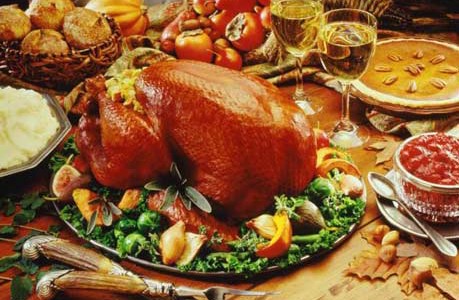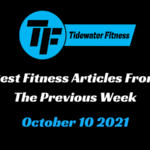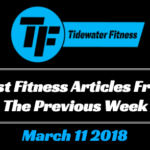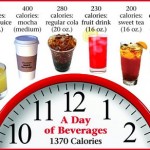The two biggest holidays of the year, Thanksgiving and Christmas, are right around the corner. And with these holidays come tremendous amounts of food.
Most people tend to overeat during this time of year. Between the turkey, stuffing, and sweet potato casserole it’s easy to see why.
This doesn’t necessarily mean you’re guaranteed to pack on a few pounds during the winter. But it does mean you need to you need to be smart about the way you approach your nutrition to ensure it doesn’t happen.
One simple strategy you can use that will allow you to enjoy holiday meals without your waistline suffering is intermittent fasting (IF).
Some may shutter at the word fasting, but it doesn’t mean that you don’t get to eat. Intermittent fasting is when you alternate periods of eating with periods of fasting.
Hunger is usually the biggest roadblock to fasting. But this is only an issue in the very beginning. After a couple days, your body will grow accustomed to your new eating schedule.
There are several different types of IF, with one of the most popular being the 16/8 method made popular by Martin Berkhan.
In this method, you fast for 16 hours and eat during an 8 hour window. Following this approach, you would eat 2-3 times during an 8 hour time period like 1 pm-9 pm. So your schedule may look like this is you eat 2 meals:
Fast: 9 pm-1 pm the next day
Eat meal 1: 1 pm
Eat meal 2: 8:30 pm
Or it may look like this if you eat 3 meals:
Fast: 9 pm-1 pm the next day
Eat meal 1: 1 pm
Eat meal 2: 5 pm
Eat meal 3: 8:30 pm
There has been a fair amount of research conducted on the subject of fasting.
One study found that exercising in a fasted state actually increases fat loss (1). Another showed that metabolism increases during short-term fasting (2).
Research also shows fasting can decrease body weight and body fat (3). This is one of the biggest benefits of IF and how it can help you during holiday feasts.
There are two reasons why IF, can help you lose weight and burn fat.
1. Insulin is decreased
If you eat constantly throughout the day, insulin is increased and remains elevated. Insulin is a hormone that promotes fat storage. During the fasting periods, insulin is lowered and your body can burn fat.
2. Calories are decreased
This one is pretty simple. You won’t be eating as much food by fasting. Lower calories means lower weight and body fat.
This makes it the perfect strategy for the holidays. You get to enjoy foods you may only eat once a year and the risk of overeating is drastically decreased.
How to make the IF work for you during the holidays?
Though there are several types of IF, I only mentioned the 16/8 method. This is the method of fasting I use, and I really like it. Not only that, it’s works perfectly with a holiday eating schedule.
Most families have bigger meals at lunch and dinner during Thanksgiving and Christmas. So, when you wake up that morning skip breakfast. No calorie beverages like water, coffee, and tea are fine here.
Then have your 1st meal at lunch and your 2nd at dinner while everyone is eating. Make sure to place a cut off point around 8 hours from the beginning of your 1st meal.
Obviously the food you eat is important as well. Be sure to get ample protein and veggies with your meals, but don’t be afraid to indulge in some holiday treats as well. And that’s it.
*****
Holidays always present a tough task of eating well. And this is usually the time of year when people tend to gain weight. But with this simple nutrition strategy, you can enjoy your meals and prevent holiday weight gain. Give it a try and let me know what you think!
References:
1. Dewave, W. et al. Effects of post-absorptive and postprandial exercise on glucoregulation in metabolic syndrome. Obesity (Silver Spring). 2007 Mar;15(3):704-11.
2. Zauner, C. et al. Resting energy expenditure in short-term starvation is increased as a result of an increase in serum norepinephrine. Am J Clin Nutr. 2000 Jun;71(6):1511-5.
3. Heilbronn, L.K., et. al. Alternate-day fasting in nonobese subjects: effects on body weight, body composition, and energy metabolism. Am J Clin Nutr. 2005 Jan;81(1):69-73.
Photo Credit:
1. http://k99.com/what-is-your-favorite-thanksgiving-day-food-poll/






